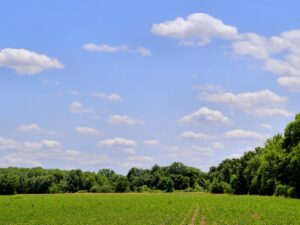
Do not look now (or at least come back to finish reading this if you do), but something important started again this week for the new year. It is not something that was unexpected because it starts every year at about the same time. But it is always a little exciting to see it when it happens. I am not talking about my strawberry plants showing some green, my flowers blooming, or my trees budding – though those are all happening. No, instead I am talking about the USDA Crop Progress report starting again for the new crop season. The last one of 2014 was published on November 24th, 2014, so it has been a few cold months to get to this point.
As the first report of the year, there is not a lot of information in the numbers just yet. Every crop listed – cotton, sorghum, rice, sugarbeets, and oats – has percent-planted numbers below the 5-year average for this date. But with that said, rice, sugarbeets, and oats are slightly ahead of 2014. Since it is so early and the numbers are rather sparse, it is not fruitful to read too much into that data yet. But something that is more meaningful is the winter wheat condition since it is already midseason. The condition is quite a bit better than last year with 44% rated Good or Excellent and only 16% rated Very Poor or Poor, compared to 2014 with 35% and 29% respectively. 2013 was similar to 2014 (36% and 30%), so you have to go back to 2012 to find a better-looking winter wheat crop than this year with 61% Good or Excellent and only 10% Very Poor or Poor.
The most interesting part of the new Crop Progress report is the addition of a few new metrics that I had not previously seen. The first is Days Suitable for Fieldwork which is a state-by-state measure weighted based on cropland acreage. Again, this early in the season the numbers are not too meaningful but it will be interesting to watch the trends in this one over time. Arizona and Nevada got a full 7 days and California got 6.9 for the week ending April 5, 2015. Closer to home, several states had 2-3 days (IL, WI, MN, ND, MO), IA had 4.2 days, and to the west they had 5-6 days (KS, NE, SD).
The other new categories for this report are Topsoil Moisture Condition and Subsoil Moisture Condition. These seem very relevant just about all-year round. In the past I have looked at Pasture Condition to get a feel for moisture conditions (in addition to the Drought Map), but I think this metric will be a more direct measure of what I want to know. As expected, CA and NV have bad numbers in both categories. Closer to home KS and SD are both over 50% Short or Very Short in both categories, and NE is nearly as bad. WI, IA, and MN are not terrible but not great with both numbers between 25% and 40% Short or Very Short. IL, MO, and ND look to be in pretty good shape overall. And Massachusetts, despite record snowfall in Boston this winter, still has 25% of cropland soil that is Short on moisture.

